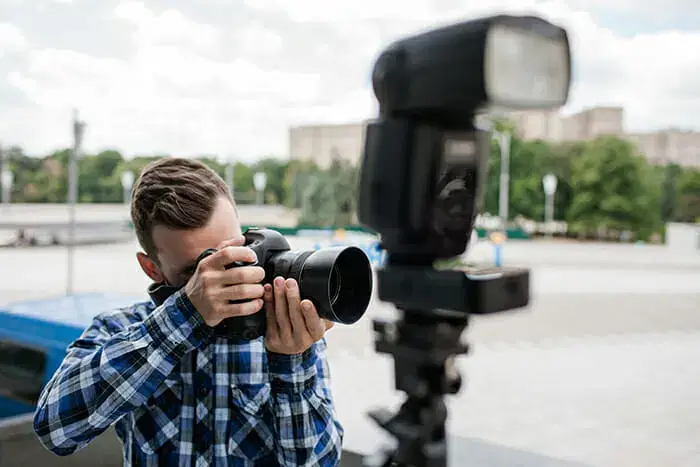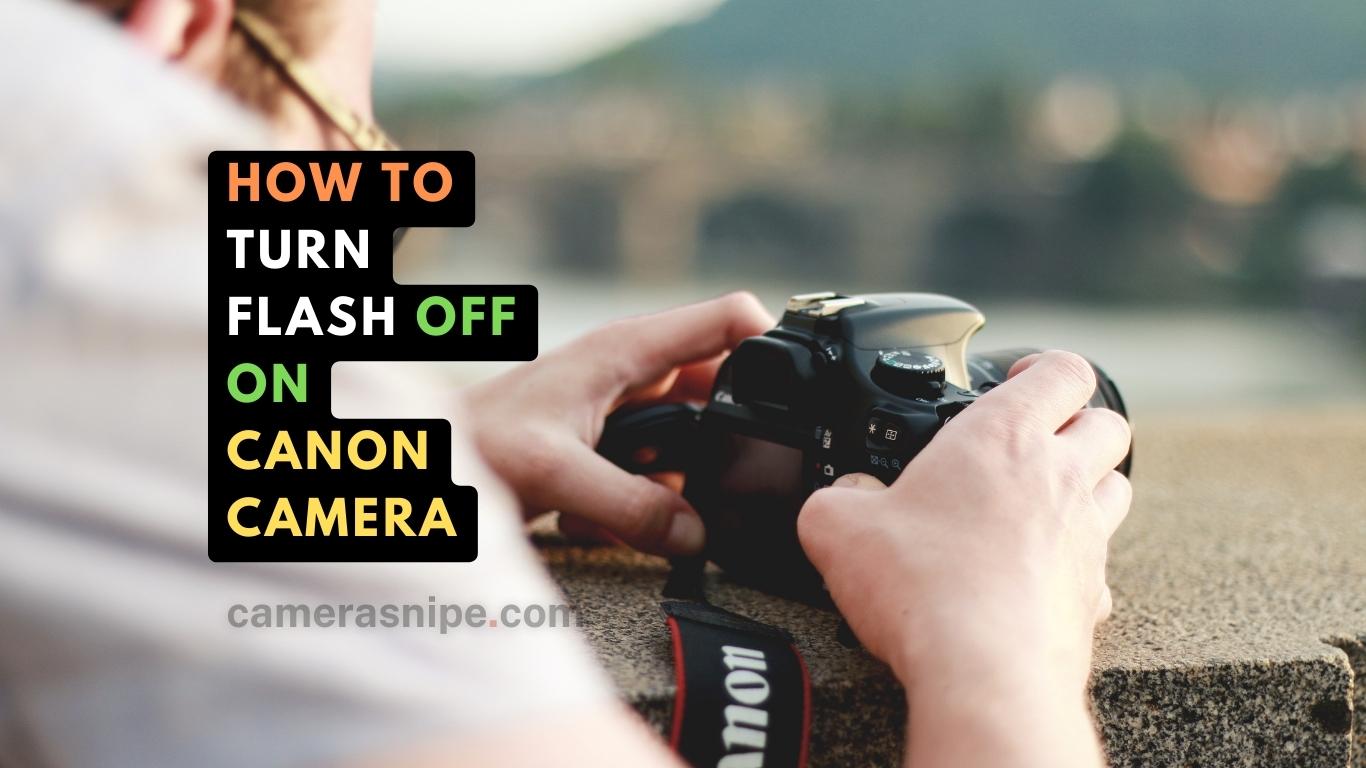In short answer: You can disable Flash by hitting the Menu button and choosing the Flash Control section. The “flash fire” button will show up, and you may decide whether to keep it turned on. If you turn off the Flash, it will stay off even when shooting in automatic mode.

Have you ever found yourself wanting to capture a beautiful moment discreetly, but your Canon camera’s Flash keeps going off, attracting unwanted attention? We’ve all been there! Fear not, for I’m here to guide you through four easy methods to turn off the Flash on your Canon camera, ensuring you capture stunning photos without any unnecessary bursts of light.
Table of Contents
Step-by-Step Guide to Turning Off Flash

It’s time to dim that Flash and let your photography skills shine. Follow these steps to turn off the Flash on your Canon camera:
1. Accessing the Menu
To begin, turn on your Canon camera and locate the Menu button. It’s usually situated near the rear control dial or the back of the camera body.
2. Navigating to Flash Settings
Once you’ve entered the Menu, use the arrow keys or the camera’s touch screen (if available) to navigate to the “Flash Settings” option. This might be listed under the “Shooting” or “Image” category.
3. Choosing Flash Control
Under “Flash Settings,” you should find “Flash Control” or a similar option. Select it to access the flash control settings.
4. Disabling the Flash
Now comes within the “Flash Control” menu, look for the option to disable the Flash. It’s often labeled as “Flash Off” or “Disabled.” Select this option to turn off the Flash.
The YouTube link I have provided below will teach you how to turn off the flash on your camera. Please check the video.
Method 2: Shooting in Manual Mode
Shooting in manual mode gives you complete control over your camera’s settings, including the Flash. Here’s how to do it:
Step 1: Switch to Manual Mode
Turn your Canon camera’s mode dial to “M” for Manual Mode. This setting allows you to adjust both the shutter speed and aperture manually.
Step 2: Set the Flash to “Off”
Access the flash settings as we did in Method 1 with your camera in Manual Mode. Choose the “Flash Off” mode from the Menu and confirm your selection.
Step 3: Adjust Shutter Speed and Aperture
Since the Flash is turned off, you’ll need to manually control the exposure by adjusting the shutter speed and aperture. A slower shutter speed allows more light to enter the camera, while a wider aperture lets more light through the lens.
Below, I have provided another YouTube link solely for your convenience to help you understand how this person is doing indoor shooting in manual mode. Utilize it to your advantage and gain insights from their experience.
Method 3: Availing the Silent Mode
Some Canon cameras come equipped with a “Silent Mode,” which turns off the Flash and mutes camera noises, making it perfect for discreet photography. Let’s see how to enable it:
Step 1: Find the Silent Mode Option
Navigate your camera’s settings to find the “Silent Mode” option. An icon resembling a speaker with a line crossing it often represents it.
Step 2: Enable Silent Mode
Once you locate the “Silent Mode” option, switch it on. This action will automatically turn off the Flash and silence any camera noises.
Step 3: Start Shooting Silently
Now that Silent Mode is activated, you can start capturing images without flash bursts or shutter sounds. It’s perfect for those candid moments!
Method 4: Custom Function Settings

You can customize function settings for more advanced Canon cameras to suit your preferences and needs. Here’s how to do it:
Step 1: Access Custom Function Menu
Go to your Canon camera’s Menu and find the “Custom Function” settings. The location may vary depending on your camera model.
Step 2: Set Flash Options
Within the “Custom Function” menu, look for options related to flash settings. You should find an option to disable Flash or set it to your desired preference.
Step 3: Apply Custom Settings
Select the appropriate custom function settings that suit your needs, such as turning off the Flash entirely or setting specific Flash parameters.
I have provided a YouTube link that offers valuable insights and tips from diverse user experiences to assist you in optimizing your Flash settings. Please check the link below.
How Changing Shutter Speeds and Exposure Modes Affect Flash Functions?
A flash will produce a brief burst of light that lasts for less than one-thousandth of a second, or even less in most cases. The full power of the Flash will be used for both exposures if your shutter speed is set to 1/250 or 1/50 second.
Now that you know how to turn off the Flash, let’s briefly explore how changing shutter speeds and exposure modes can impact Flash functions.
Adjusting Shutter Speed
When you decrease the shutter speed, your camera’s sensor is exposed to light for extended periods. In low light conditions, this can be useful, but it might lead to overexposed images when using Flash. On the other hand, faster shutter speeds can help freeze motion but require additional flash power to achieve proper exposure.
Here, I have added a Quora link to help you thoroughly understand how shutter speed affects flash photography.
Shifting Exposure Modes
Your Canon camera offers various exposure modes like Aperture Priority (Av), Shutter Priority (Tv), and Program (P). These modes affect how the camera handles the Flash and other exposure settings.
➢ For example,
In Aperture Priority mode, you control the aperture, and the camera adjusts the shutter speed and flash output accordingly.
➢ Note:
Canon cameras typically offer several flash modes to suit different shooting conditions. These modes may include Auto Flash, Red-Eye Reduction, Slow Sync, and Rear Curtain Sync, among others. Familiarize yourself with these modes to maximize your camera’s flash capabilities.
Related: Are Refurbished Canon Cameras Good?
Tips for Flash-Free Photography

With the Flash out of the equation, let me share some quick tips to make your flash-free photography even more exceptional:
Embrace natural light
Utilize available sources to create a captivating photo ambiance.
Adjust ISO settings
In low-light situations, increase the ISO to make the camera more light-sensitive.
Use a tripod
Stabilize your camera to avoid blurry images in longer exposure times.
Master your camera’s settings
Explore manual mode to control your camera’s settings completely.
Troubleshoot Some Common Problems

Encountering issues while turning off the Flash? Don’t worry; let’s troubleshoot some common problems:
1. Flash Not Turning Off
If the Flash stubbornly refuses to turn off, double-check the flash settings in your camera’s Menu. Ensure that you’ve selected the correct option to disable the Flash.
2. Other Camera Settings Affected
Disabling the Flash may sometimes alter other camera settings, such as the shooting mode or exposure compensation. Review your camera’s user manual to understand how flash settings interact with additional features.
Watch: Canon A-1 Vs AV-1
Frequently Asked Questions
Q1: Can I still use the Flash when needed after turning it off?
Absolutely! Once you turn off the Flash using any of the methods mentioned, you can easily reactivate it when the situation calls for additional lighting.
Q2: Will disabling the Flash improve my photography?
Disabling the Flash can improve your photography, especially in low-light situations or when you want to capture the ambiance without harsh lighting.
Q3: Are these methods applicable to all Canon camera models?
Yes, most Canon cameras share similar settings and menus, so these methods should work across various Canon models. However, slight variations might exist, so always refer to your camera’s manual for specific instructions.
Q4: Can I use these methods for shooting videos too?
Absolutely! These methods apply to both photography and video modes, ensuring you have control over when and how the Flash operates.
Q5: Will the Silent Mode affect other camera settings?
The Silent Mode primarily focuses on muting camera noises and turning off the Flash. It won’t alter other settings like exposure or focus modes.
Q6: Can I adjust flash settings for specific shooting modes?
Absolutely! Canon cameras often allow you to customize flash settings for various shooting modes like portrait, landscape, or macro.
Q7: Does turning off the Flash affect the image quality?
In most cases, turning off the Flash can lead to more natural-looking images with better colors and reduced harsh shadows.
Q8: Why do some indoor shots look better with flash-off?
Indoor shots can benefit from ambient lighting, creating a warmer and more inviting atmosphere than the harsh light produced by the Flash.
Conclusion
Congratulations! You’re now well-versed in turning off the Flash on your Canon camera. Whether you need to capture discreet moments, avoid unnecessary disruptions, or control your photography settings more effectively, these four methods have covered you. Remember, experimenting with different settings is critical to mastering photography!
REFERENCES
1, 2, 3, 4, 5

